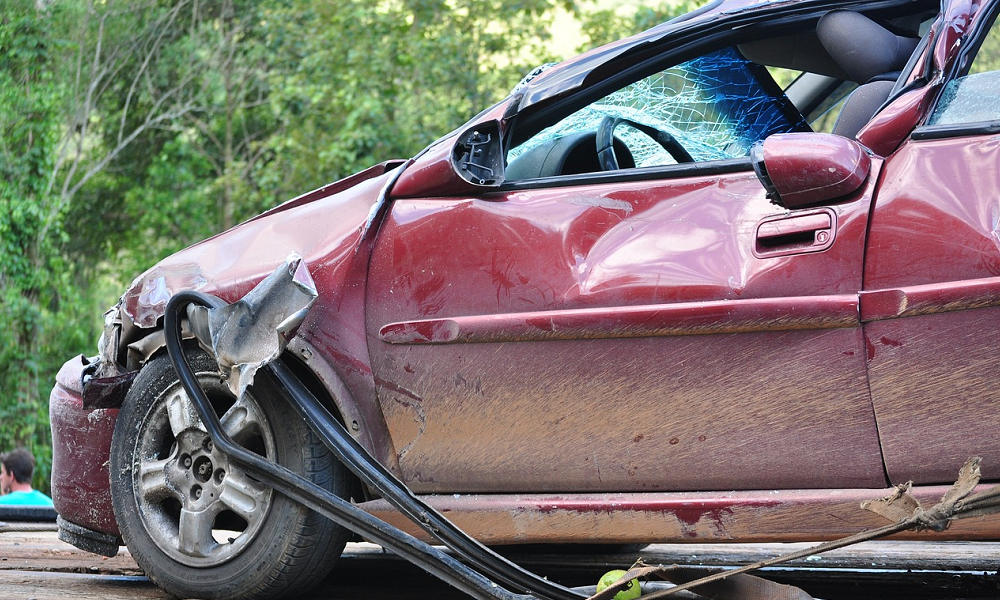Reviews
Bankruptcy and Your Car Accident Settlement: What to Know

Bankruptcy changes how your car accident settlement works. It creates an “estate” that includes most of your property and money. And your accident claim becomes part of this estate.
The federal Bankruptcy Code establishes the main rules about how assets like a settlement get treated in bankruptcy. But state laws also play an important role in critical areas like exemption planning. The timing of each process also changes how they interact.
Let’s break down the key components of this intricate legal puzzle.
Key Provisions
There are several critical provisions that directly impact accident settlements, including:
- Automatic Stay: This stops all collection actions against you personally – related to dischargeable debts.
- Trustee Oversight: A trustee gets appointed to oversee and administer your bankruptcy estate. This trustee has special powers over assets like personal injury out-of-court legal settlements.
- Asset Disclosures: You must fully disclose expected personal injury settlements as an asset, even if the case has not been settled yet.
- Exemption Rules: Federal and state exemption laws allow for protecting certain assets in bankruptcy like compensation for injuries or lost wages.
Relevant State Law Considerations
In addition to federal provisions, individual state laws affect your rights and asset protections after an accident, especially relating to:
- Exemption Options: Some states provide unlimited exemptions for personal injury compensation, while others have dollar limits.
- Medical Cost Coverage: Some states have special rules for protecting settlement funds earmarked for future medical expenses.
- Insurance Regulations: Requirements relating to car insurance, health insurance, and workers’ compensation impact settlements.
- Lawsuit Rules: State civil procedure laws govern accident claims and lawsuits.
Bankruptcy Types
Chapter 7 Bankruptcy
It provides the most sweeping debt relief through the liquidation of your assets. However, it also brings an immediate change regarding your car accident settlement.
Loss of Control
The moment you file Chapter 7, the trustee assumes extensive legal control over any pending accident claims or cases you have. The trustee has powers to:
- Take over direct settlement negotiations with insurance companies
- Make the final decision on whether to accept or reject settlement offers
- Choose whether to hire, fire, replace or direct your personal injury attorney
- Determine how to distribute any settlement proceeds and payments
Exemption Limits
Finally, Chapter 7 imposes strict limits on the personal injury compensation you can exempt and protect. Only certain categories of damages qualify, and dollar amounts are capped. The trustee liquidates any non-exempt portion of a settlement to pay creditors.
In short, Chapter 7 brings a near-total loss of control over and access to any car accident settlement funds you might obtain.
Chapter 13
You get to keep possession of all your assets. But you must still disclose expected settlements, and the proceeds can impact your bankruptcy repayment plan terms.
Maintaining Possession
You remain in possession of your car accident claim throughout. You decide whether to settle or pursue litigation. There’s also the automatic stay.
Repayment Plan Effects
However, the settlement can still influence your bankruptcy case repayment plan in important respects:
- You might have to increase your monthly payment amounts.
- More settlement funds could flow through to creditors.
- The court may alter repayment terms for creditors.
So while Chapter 13 grants more autonomy over litigation decisions, the settlement itself still impacts your bankruptcy obligations.
Required Disclosures
Additionally, as with Chapter 7, you must fully disclose the existence of any accident claims when first filing Chapter 13 bankruptcy, before any actual settlement. And if an accident happens later during your repayment period, you still have to disclose the details to the court.
Overall Chapter 13 offers some advantages for maintaining control over your injury claim. But tradeoffs like repayment plan changes still apply regarding the ultimate settlement.
Timing Issues Between Bankruptcy and Accident Settlements
When bankruptcy and accident settlement events happen in sequence, the timing itself creates additional legal and strategic implications.
Settling Your Injury Case Before Bankruptcy
If you settle your car accident case before a bankruptcy filing, some advantages apply:
- Future bankruptcy cannot take the settlement itself
- Proceeds get treated as regular assets with normal exemptions
- You avoid trustee control of the negotiations
- More flexibility over payment of creditors
However, even post-settlement bankruptcy carries important impacts:
- Settlement funds face heightened scrutiny
- Transfers get reviewed for hiding assets
- Exemption limits might still apply to the remaining cash
- Must disclose details of the resolved claim
So eventually filing bankruptcy after receiving settlement money brings its own challenges.
Bankruptcy Filed Before Accident Occurs
If your bankruptcy comes first, before any car crash, future accident claims remain under your control. However, bankruptcy still changes the landscape:
- Must disclose accidents and claims that happen during bankruptcy
- Any new medical debts would not be discharged
- Could not use bankruptcy automatic stay for new accident lawsuits
- Settlement funds you obtain would enter the bankruptcy estate
The main advantage here is that the trustee does not gain power over legal claims that did not exist at the initial bankruptcy filing. But the proceeds still intersect with the bankruptcy case.
Settling Your Claim After Bankruptcy Filed
When an accident happens first, but settlement comes after a bankruptcy filing, complications escalate dramatically. The claim itself and its proceeds get pulled into the bankruptcy in various ways:
- The trustee assumes extensive power over settlement discussions as with Chapter 7 cases
- You lose significant control as the trustee can hire lawyers for your case, and negotiate deals
- Insurance firms often lower settlement offers knowing money will go to creditors
- Exemption planning becomes far more difficult but also more critical
This situation introduces the most complex timing issues and restrictions of all.
Through each of these chronologies, the precise order of events has meaningful consequences for your rights and options.
Differing Settlement Components and Exemption Outcomes
Car accident settlements comprise a range of potential compensation elements, each with distinct exemption treatments:
Pain and Suffering Awards
These costs represent non-economic, subjective losses from enduring injury distress:
- Unlimited protection in some states, while others set caps
- Federal exemptions less predictable based on facts
- Trustees often challenge over-inflated pain valuations
- Clear documentation from doctors aids justification
So particular state laws drive pain and suffering exemption eligibility and amounts.
Lost Income Reimbursement
Replacing lost wages during recovery periods relies on showing actual missed work time:
- Treated as current income unless proven future losses
- Some states exempt 100% of wage losses
- Must file income tax returns on this portion
- Pay stubs or employer records help substantiate
Documenting exact periods of missed work time is thus essential to secure full lost wage exemptions.
Property Damage Reimbursement
Reimbursing car repair bills, replacement costs and other property losses involves several key factors:
- Rarely protected by personal injury exemptions
- Insurance payments often go straight to lienholders
- Needs detailed repair records and valuations
- Timing issues on the use of funds
So property loss funds face reluctance from trustees and limited protection options.
In this way, the precise type of damages directly shapes available exemptions.
Attorney Selection and Role Impact
The specialized legal teams assisting you with your bankruptcy filing and car accident claim take on particular importance and coordination demands when these two situations converge.
Role
A strong bankruptcy lawyer must actively manage the intersection with your accident claim to optimize exemptions and value recovery.
For example, if you are in Austin, the Austin car accident lawyers in charge of your case may have to:
- Craft exemption strategies favoring personal injury funds
- Coordinate closely with your accident attorney
- Scrutinize settlement proposals for protection gaps
- Flag timing problems between cases
- Negotiate firmly with trustees over exemptions
- Limit creditor collection efforts
- Structure optimal bankruptcy filing approach
- Ensure thorough claim disclosures
So your bankruptcy counsel plays a central role in reconciling these two complex legal matters through direct engagement on accident case issues.
Priorities and Demands for Your Accident Lawyer
Likewise, your personal injury or accident attorney must integrate bankruptcy considerations directly into litigation and resolution calculus:
- Provide accurate claim valuations
- Adjust negotiations for trustee role
- Structure optimal settlement components
- Secure sufficient future medical funds
- Limit insurance company discount demands
- Document all damages exhaustively
- Resolve medical care liens
- Preserve lawsuit evidence carefully
- Coordinate timing with a bankruptcy lawyer
Both attorneys handling complementary cases must work synergistically across this divide to maximize your position.
Longer-Term Financial and Legal Protection Planning
Recovering physically, financially, and legally after both bankruptcy and serious accident injuries requires significant forward-thinking strategies across areas:
Future Financial Planning and Security
- Anticipate medical costs accurately
- Assess disability needs realistically
- Explore government health program options
- Evaluate insurance and benefits
- Identify sustainable income sources
- Create achievable savings goals
- Control tax obligations
Bankruptcy makes personal finance rehabilitation after major life disruptions like accidents all the more vital.
Ongoing Legal Protections and Risk Management
- Maintain robust medical records access
- Regularly re-evaluate disability status
- Explore ongoing lawsuit evidence preservation
- Update powers of attorney and estate planning
- Consider asset protection tools like trusts
- Carry ample insurance coverage
- Monitor creditor bankruptcy discharge compliance
Post-bankruptcy life also requires diligent attention to legal and protection measures for maximum security.
By coordinating all these bankruptcy and accident guides carefully, you can best stabilize your situation following these twin traumatic events.

-

 World1 week ago
World1 week agoEthiopian volcano erupts for first time in thousands of years
-

 Health2 days ago
Health2 days ago8 kittens die of H5N1 bird flu in the Netherlands
-

 Legal7 days ago
Legal7 days agoUtah Amber Alert: Jessika Francisco abducted by sex offender in Ogden
-

 US News6 days ago
US News6 days agoExplosion destroys home in Oakland, Maine; at least 1 injured
-

 Health7 days ago
Health7 days agoMexico’s September human bird flu case confirmed as H5N2
-

 Legal3 days ago
Legal3 days ago15 people shot, 4 killed, at birthday party in Stockton, California
-

 World7 days ago
World7 days agoWoman killed, man seriously injured in shark attack on Australia’s NSW coast
-

 Health6 days ago
Health6 days agoMarburg outbreak in Ethiopia rises to 12 cases and 8 deaths




